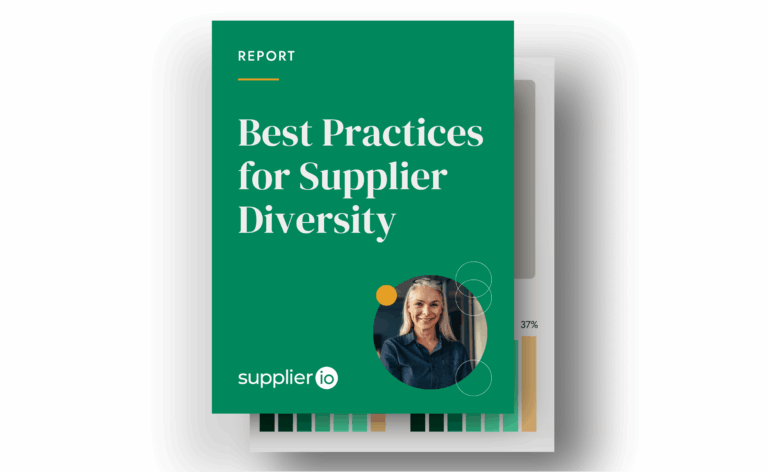The 7 Main Characteristics of a Supplier Diversity Program
An effective supplier diversity program is built on transparency, communication, and strategy. Let’s take a look at seven characteristics of successful supplier diversity programs.

Establishing, maintaining, and growing a supplier diversity program requires an investment of time, energy, and resources. Educating yourself and your stakeholders on best practices can save a lot of headaches and wasted effort—and money—enabling you to build a strong program or grow an existing one.
An effective supplier diversity program is built on transparency, communication, and strategy. This sounds simple enough, but what does it actually mean in practice? Let’s take a look at seven characteristics of successful supplier diversity programs.
1. Established Baseline
Knowledge is power, so your supplier diversity program should be built on the knowledge of what your organization already has in place. Establishing a performance baseline means identifying the number of diverse suppliers presently in your portfolio, which categories those suppliers are in, and your current spend with each of those suppliers.
From this baseline, you can set goals, determine which diversity categories you will focus upon, and decide which certifications your program will accept. A third-party data enrichment solution can help you quickly gather that information.
2. Clear Corporate Policy
Your supplier diversity program is an extension of your corporate goals and values; therefore, it should be based on a clear written policy. This policy should define the program and establish measurable goals for both the long and short terms. Ultimately, you want a policy that is backed by company leadership because it aligns with corporate goals and values.
3. Organization-Wide Commitment
Maintaining a successful supplier diversity program requires support from the C-suite and commitment from the organization as a whole. This includes making sure the supplier diversity program has high visibility within your company, training and educating the various business units on how supplier diversity works, being accountable at all levels and in all departments, and including diverse suppliers in conversations around the supply chain. Tools such as an economic impact report and spend dashboards can help keep your program top of mind in your organization.
4. Integration Throughout the Company
A commitment to supplier diversity means taking action, and that’s where the integration characteristic comes into play. The simplest way to ensure supplier diversity is part of every aspect of your business is to set goals that drive participation. You probably know that you will need to work with procurement teams in all categories to seek out and include diverse suppliers, but don’t forget the rest of the supply chain. Make it easy for anyone in the company (Procurement teams as well as business and location leaders) to find and source with diverse suppliers. Require and incentivize Tier 2 reporting, and support primes as they develop their own supplier diversity programs.
5. Identification of and Contracting with Diverse Suppliers
Finding qualified diverse suppliers is a necessity for growing supplier diversity programs. In our 2022 State of Supplier Diversity report, 81 percent of respondents said they use third-party databases to search for diverse suppliers, while 70 percent said they leverage certification agencies such as the National Minority Supplier Development Council and the Women’s Business Enterprise National Council. Including diversity questions in your supplier onboarding process is a quick way to start collecting that information, then you can verify either manually or against a third-party database.
Supplier.io’s Supplier Explorer delivers detailed profiles on both current and potential suppliers, including information on their diversity status, certifications, product and service offerings, contacts, and more, in a single, easy-to-navigate interface.
6. Diverse Supplier Inclusion
Effective supplier diversity programs are data-driven to achieve real-world results. Your program should have an established process to measure diverse spend, number of diverse suppliers in the supply chain, overall percentage of spend, and so forth. This data should be reported regularly both to the supplier diversity team and company leadership, and it should be compared to other programs to provide benchmarks.
7. Supplier Development
Supplier diversity is not only about identifying diverse suppliers that are ready to supply. It’s also about investing in and developing your future supply chain. Supplier development can be as formal or informal as you would like, involving mentoring, financial and technical education, networking, working with prime suppliers to develop their own supplier diversity program, and other growth opportunities.
Typically, supplier development is a characteristic of more advanced or mature supplier diversity programs. But even if you’re not ready to launch a formal initiative now, include supplier development in your strategic plan so you can begin establishing the foundation for a long-term, sustainable diverse supplier portfolio.




